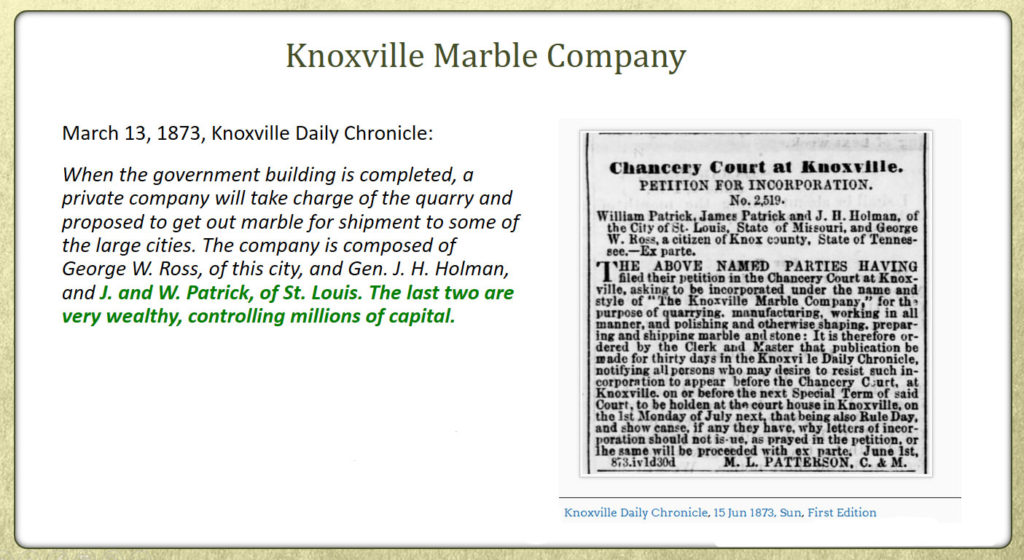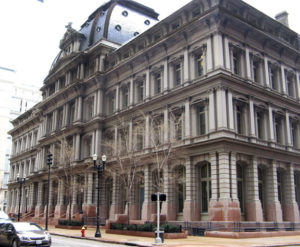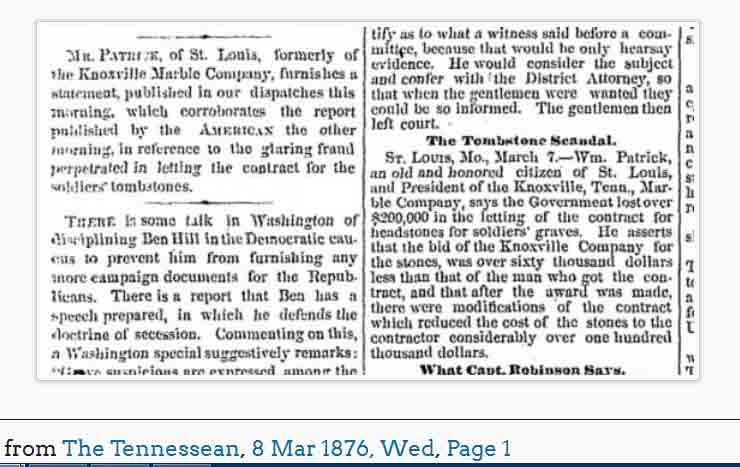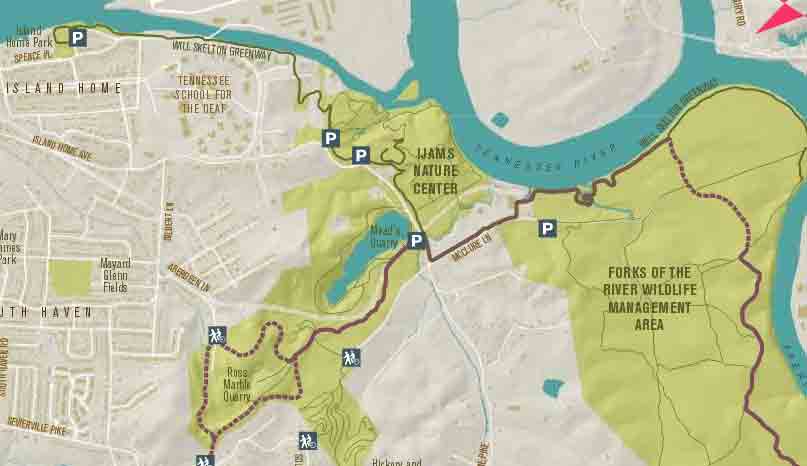I have always wanted to know how Annie and Will met. How does a young woman from Knoxville, who went to school in Philadelphia, meet a young man from St. Louis? What if they met in Washington, D.C. in 1874 when Will was there to interview for a position on the Newton-Jenney Expedition and Annie was in town to help her father (who was in the Senate at the time)? Or maybe Annie visited one of her school friends who lived in St. Louis? Other than those two options, I couldn’t think of anything.
Imagine my surprise when I found the St. Louis Directory for 1875 listed William Patrick (1) as president of the Knoxville Marble Company! Nowhere in the family history has this EVER been mentioned!
Finding the Knoxville Marble Company
While building the Knoxville Post Office and Custom House in the early 1870s, the US government owned and operated a marble quarry southeast of Knoxville at the confluence of the Holsten and French Broad Rivers becoming the Tennessee River. Once the government was done with taking marble from the quarry, it sold it to the Knoxville Marble Company.

As the picture above shows, the company was formed by William Patrick (1) and his brother, James (2), along with Gen. J. H. Holman, a former resident of Knoxville then living in St. Louis (ah! the connection), and George W. Ross of Knoxville.
I love inflating William and James to millionaires! At most, either of them probably only had $100K or so, which was still a lot of money in those days. James seems to have had more money than William, but not a million.
The US government was building several post office/custom houses around the country at this time. The architect in charge of this effort was Alfred B. Mullett and Mr. Mullett was very, very found of Tennessee marble. He used it in many of the post office/custom houses, including the one in St. Louis.

The St. Louis custom house was started in 1873. I still have research to do to see if William and James provided lumber for the construction in addition to the stone. William got out the lumber business in 1874, maybe to concentrate on the Knoxville Marble Company?
The Quarry
After pouring through Knoxville newspaper articles and some old books, I believe I have found the original quarry that provided marble for the Knoxville and St. Louis custom houses.

The purple arrow points to the little pond shown on Google Maps. The satellite pictures below show the quarry as it appears today.

The Knoxville Marble Company
The company itself seems to have done well from the very beginning. In addition to the St. Louis custom house, the company also provided marble for the Memphis custom house and other federal projects. The one contract they did not get was to provide the marble for federal civil war cemetery headstones. Secretary of War, William W. Belknap awarded the contract to a friend who provided him with a generous kickback. The Knoxville Marble Company was acknowledged as the lowest bidder and William is quoted in several newspaper articles about this controversy. Belknap eventually resigned while the House of Representatives was voting to impeach him for this and other bribery charges.

The first Mr. Patrick must be James. He seems to have left the company after only a few years. William continued as president of the company until around 1885. Just about the time he, Eliza, and the girls moved to Denver.
Annie and Will
I covered the “scandal” pretty well in a post last year. But, to recap, I found a news article that said one of Parson Brownlow’s daughters had fallen in love with a stone cutter working on the Knoxville Custom House. The Parson had tried locking her up in her room to keep them apart, but she escaped. He found her and shipped her off to a convent in Washington, D. C.
Knoxville Marble Company After 1885
In 1881, John Ross, son of George W. Ross, bought land on the other side of the Tennessee River and started another quarry. He used the mill at the Knoxville Marble Co. quarry to prepare the marble. Around 1885, George W. Ross became the president of the Knoxville Marble Company after William left. This second quarry can be seen today as part of the Ijams Nature Center.

